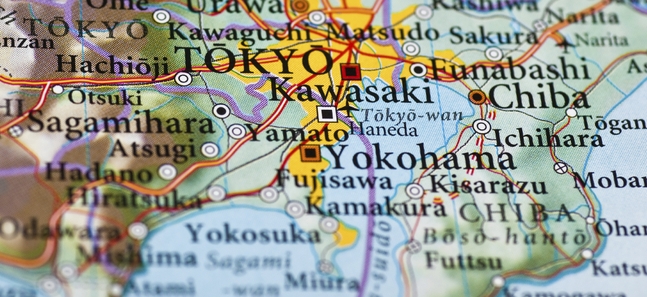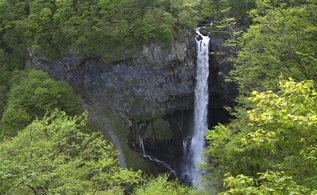Day trips and weekend breaks: Tochigi Prefecture
What to do and where to go when you need to get outta town

Posted: Mon Apr 25 2011
Tochigi
Nikko
 If you only do three things...
If you only do three things...
Cedar avenue
Nikko is listed by Guinness World Records as the home of the world’s longest avenue. More than 12,000 cedar trees line 35 kilometres (22 miles) of road, a gift from a feudal lord to shogun Ieyasu Tokugawa almost 400 years ago. There were thought to be around 200,000 trees originally, but they are gradually succumbing to old age and pollution. Transport: Kami-Imaichi Station (Tobu Nikko line)
Toshogu
Even if you forgo the other buildings in the Toshogu complex, the Toshogu itself (1,300 yen) is a must-see. It's popular, so try to arrive early in the morning, before the tour buses converge, or late in the afternoon. The precincts are home to intricate and brightly coloured gates, statues, small temples, sacred springs and, of course, the Oku-sha – the shogun's tomb. There is also a small treasure museum, which exhibits the area's riches on rotation. Daily, 8am-5pm (until 4pm, Dec-Mar)
Lake Chuzenji & Kegon Falls
To see the area’s famed natural beauty, be sure to visit Lake Chuzenji, situated high above Nikko. The Iroha-zaka road zigzags to an altitude of 1,300 metres (4,265 feet) – watch out for the aggressive monkeys alongside the road. Most tourists come to view the Kegon Falls, where the lake’s waters plunge 100 metres (330 feet) into the Daiyagawa river. A lift (520 yen) takes you down to an observation platform that’s level with the bottom of the falls.
Where to eat
It would be a shame to leave Nikko without trying the local speciality, yuba (soya milk skin). Gyoushin-Tei (2339-1 Yamauchi, Nikko, Tochigi; 0288 53 3751) is set in a 12th-century garden and serves yuba in shojin ryori or kaiseki ryori (4,350 yen) courses. There are also numerous noodle shops serving soba (including yuba soba) along Nikko’s main street, and up at Lake Chuzenji. Enya (443 Ishiyamachi, Nikko, Yamauchi; 0288 53 5605; www.nikko-enya.co.jp) offers a selection of Japanese and Western meat dishes and over 80 different world beers.
Where to stay
The Turtle Inn Nikko is a small inn by the river near Shinkyo (2-16 Takumicho, Nikko, Tochigi; 0288 53 3168; www.turtle-nikko.com; 6,500 yen, double room). It also has an annex called Hotori-an (8-28 Takumicho, Nikko, Tochigi; 0288 53 3663; 12,400 yen) a few minutes away. Get off at the Sogo Kaikanmae bus stop for either. Staff speak English. Alternatively, the Nikko Kanaya Hotel (1300 Kami-Hatsuishi, Nikko, Tochigi; 0288 54 0001; www.kanayahotel.co.jp; 17,325-63,525 yen), opened in 1873, is one of Japan's oldest. It’s a short ride from either of Nikko’s stations on a Tobu bus (190 yen) heading for Nishisando, Kiyotaki, Okuhosoo, Chuzenji or Yumoto Onsen; get off at the Shinkyo stop.
How to get there
From Tokyo's Tobu Asakusa Station, limited express trains go directly to Tobu Nikko Station (2,620 yen single; 1hr 50 mins) and should be reserved well in advance. Regular (kaisoku) trains cost 1,320 yen and take 20 mins longer but don’t require reservations. For JR services, take the shinkansen from Tokyo Station (1hr) or the regular train from Ueno (1hr 30 mins-1hr 50 mins) to Utsunomiya; from there it’s 45mins on a local train to JR Nikko Station. Single fare: 2,520 yen regular; 4,720 yen by bullet train. There are also some trains from Shinjuku (3,900 yen, 2hrs).
Oya-machi
If you only do two things…
Oya Stone Museum
The deceptively small Oya Stone Museum displays a number of miners’ tools, early photos of the quarrying process, and an exhibit about Frank Lloyd Wright’s Imperial Hotel in Tokyo (demolished in 1968), for which he insisted on using Oya stone. Then things get really interesting: you descend a stairwell into a vast underground ex-quarry 60 metres (197 feet) deep and large enough to swallow the Tokyo Dome. The quarry has been used as an aircraft factory in World War II, a mushroom farm and, more recently, a concert hall.
Mon-Wed, Fri-Sun, 9am-4.30pm; closed Thur (except in Aug). 600 yen. 909 Oya-machi, Utsunomiya, Tochigi (028 652 1232)
Oya-ji
Founded in 810, this temple has been a tourist destination ever since, largely because of its remarkable reliefs, which date as far back as the early part of the Heian era (794-1185). A small museum contains little of interest except the remains of an 11,000-year-old skeleton discovered here during restoration. Across the street, flanked by souvenir shops, stands a massive rectangular entrance cut through the hill. Head through here, and you reach the towering 17-metre (56-foot) Heiwa Kannon (Goddess of Peace) statue. Daily, 8.30am-5pm (Apr-Oct); 9am-4.30pm (Nov-Mar); closed for two weeks in Dec, and on occasional Thur. 300 yen. 1198 Oya-machi, Utsunomiya, Tochigi (0286 52 0128)
Where to eat
Oya’s tourist cafeterias are uninspiring. It’s better to bring a packed lunch or eat near Utsunomiya Station before boarding the bus.
Where to stay
The small town of Oya-machi lies 110 kilometres north of Tokyo, sitting on a mountain of volcanic stone. It's another simple day trip from the capital.
How to get there
From Ueno Station take the JR Tohoku line to Utsunomiya Station; journey times and prices vary from 44mins/4,600 yen by bullet train to 1hr 32mins/1,890 yen by regular train. Take the west exit at Utsunomiya and catch bus 45 from bus stop 6 to Oya Kannonmae (25 mins) – pay as you get off.
Tweets
- About Us |
- Work for Time Out |
- Send us info |
- Advertising |
- Mobile edition |
- Terms & Conditions |
- Privacy policy |
- Contact Us
Copyright © 2014 Time Out Tokyo


Add your comment